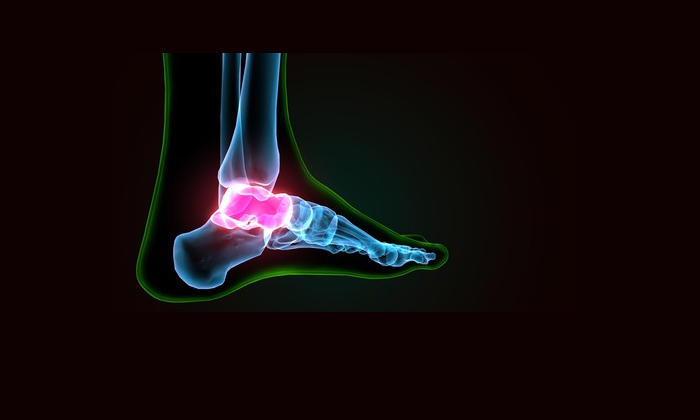
Talus Fractures

A talus fracture is a break in one of the bones that forms the ankle. This type of fracture often occurs during a high-energy event, such as a car collision or a fall from a significant height.
Because the talus is important for ankle movement, a fracture often results in substantial loss of motion and function. A talus fracture that does not heal properly can lead to complications, including a limp, arthritis, and chronic pain. For this reason, most talus fractures require surgery.
The talus is the bone that makes up the lower part of the ankle joint (the tibia and fibula make up the upper part). The ankle joint allows your foot to move up and down. The talus also sits above the heel bone (calcaneus). Together, the talus and calcaneus form the subtalar joint. This joint allows your foot to move inward and outward, which is important for walking on uneven ground.
The talus is the main connector between the foot and leg, helping to transfer weight and pressure forces across the ankle joint. It is largely covered by articular cartilage, the white slippery material that covers all joint surfaces. This cartilage allows the talus to move smoothly against its neighbor bones.
Cause
Most talus fractures are the result of high-energy trauma such as a car collision or a fall from height. Injuries from sports, particularly snowboarding, are another, though less common, cause of talus injuries.
Symptoms
Patients with talus fractures usually experience:
- Acute pain
- Inability to walk or bear weight on the foot
- Considerable swelling, bruising, and tenderness
Treatment
Immediate first aid treatment for a talus fracture, as with any painful ankle injury, is to apply a well padded splint around the back of the foot and leg to immobilize and protect the limb. The splint should extend from the toe to the upper calf. Elevating the foot above the level of the heart helps to minimize swelling and pain. Specific treatment depends upon the severity and the type of fracture, so it is important to seek immediate medical attention.
Nonsurgical Treatment
Many talus fractures require surgery because of the high-energy force that creates the injury. Stable, well aligned fractures, however, can often be treated without surgery. This is usually done with a combination of immobilization and then rehabilitation.
Casting. A cast will hold the bones in your foot in place while they heal. You will have to wear a cast for 6 to 8 weeks. During this time, you will be asked to limit the amount of pressure you put on your foot. The goal is for the bone to heal enough for you to bear weight on it without the risk that it will move out of position.
Rehabilitation. When the cast is removed, your doctor will give you exercises to help restore range of motion and strengthen your foot and ankle.
Surgical Treatment
If the bones have shifted out of place (displaced), surgery to internally set and stabilize the broken pieces results in the best outcome and reduces the risk of future complications.
Open reduction and internal fixation. During this operation, the bone fragments are first repositioned (reduced) into their normal alignment. They are then held together with special screws or metal plates and screws.
Our Services
Book Appointment
Book Your Appointment Today
We welcome your questions Do you have questions regarding your own situation? Do you actually want to resolve your problem and not just temporarily cover up the pain?




